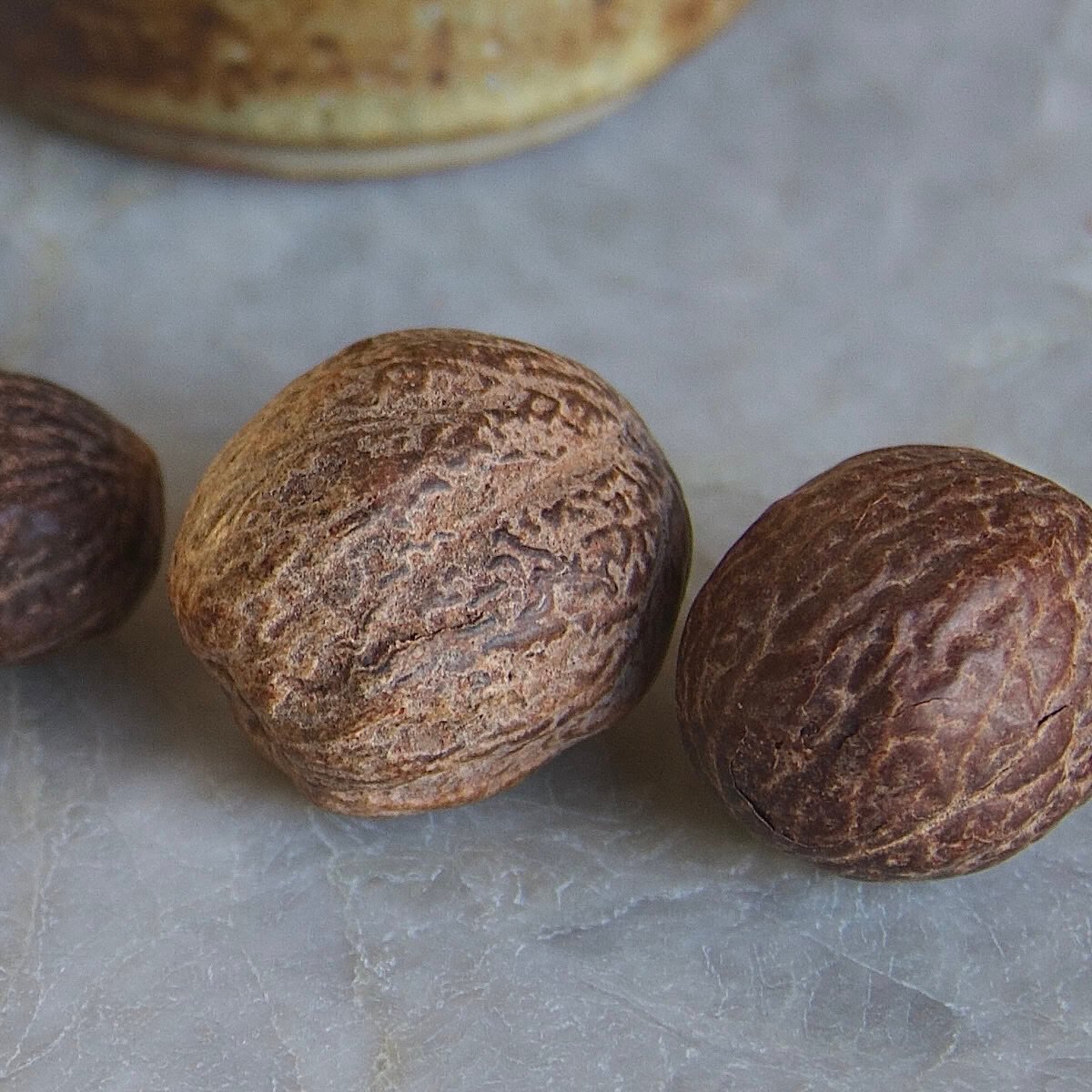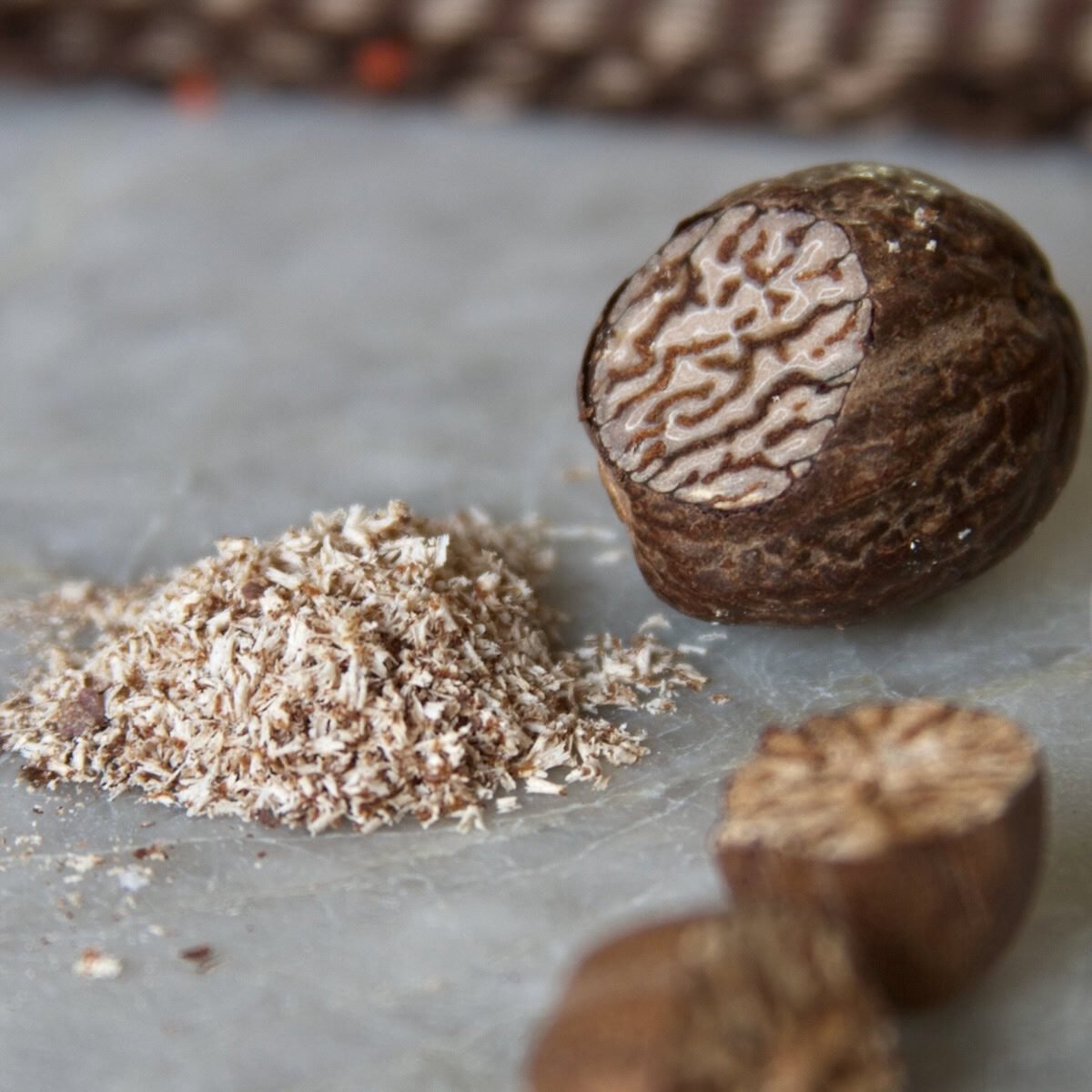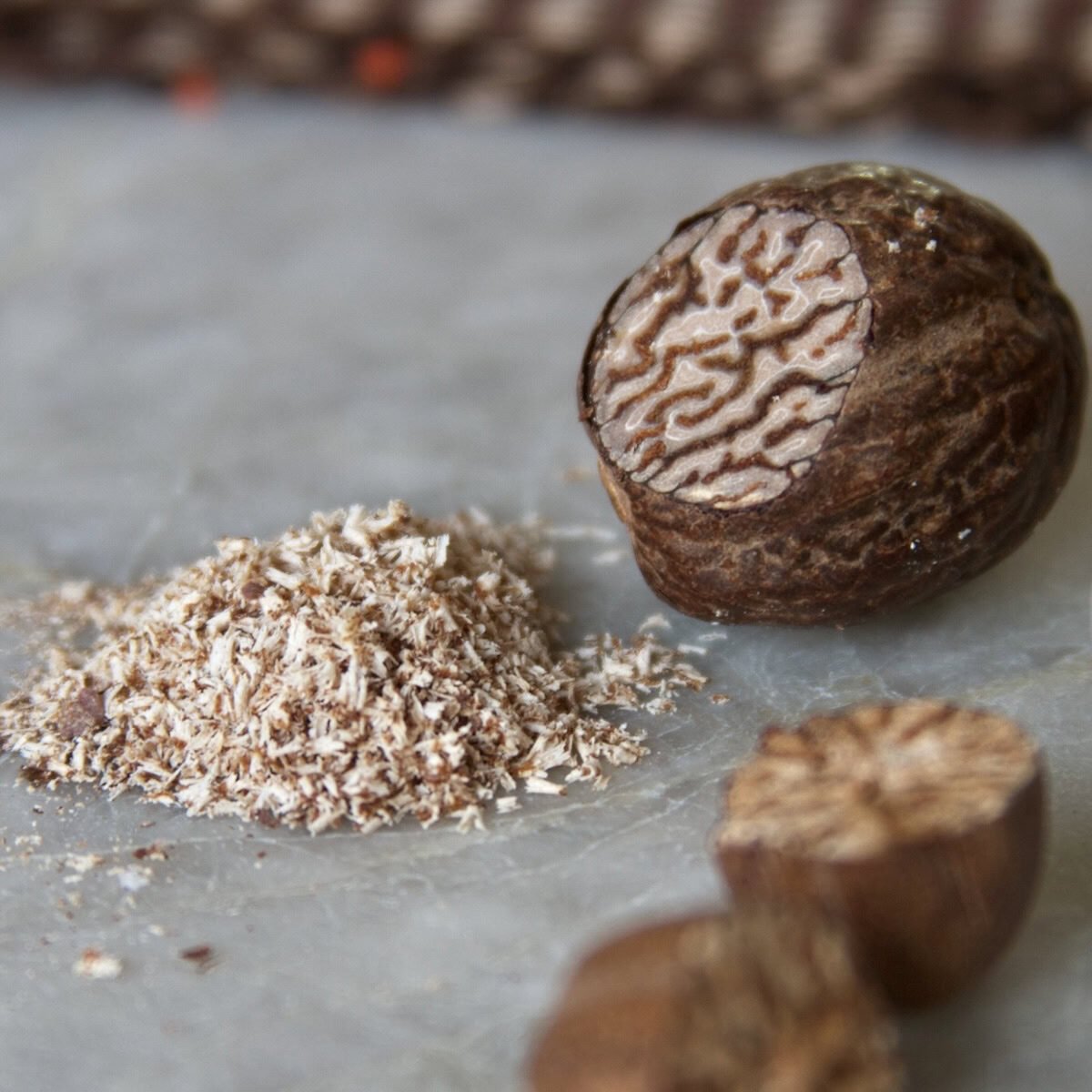Nutmeg
Nutmeg is the spice produced from the seed kernels of Myristica fragrans, a tropical evergreen tree in the Myristicaceae family. It is known as the sister spice to mace since they both come from the same fruit. Mace is the outer webbing that encases nutmeg.

REGION OF ORIGIN
The nutmeg tree is from the Banda Islands in the Maluku archipelago (also known as the Moluccas) in eastern Indonesia. The Moluccas were historically called the Spice Islands for being the sole source of nutmeg, mace, and cloves for centuries. These islands' tropical climate, rich volcanic soil, and consistent rainfall are ideal growing conditions for the nutmeg and clove tree.
PART & COLOR
Nutmeg’s hard outer seed coat is dark brown, while the seed kernel inside is lighter—often beige with darker marbling. When freshly grated, the inner kernel reveals an even paler beige. In contrast, pre-ground nutmeg is often reddish-brown due to age, oxidation, or the addition of fillers.
HARVEST
There are separate male and female nutmeg trees, and only females produce fruit. They begin flowering around 5-8 years old, and after pollination, develop fruit over 9 months. The nutmeg fruit is ripe when it splits in half, revealing the seed (nutmeg) and the aril (mace) within. They must be harvested on the same day they open, or mold will quickly grow.

FLAVOR & AROMA PROFILE
Nutmeg's profile weaves a tapestry of sweetness, warmth, and spice. Freshly grated, the seeds release a heady, intense fragrance reminiscent of warm baking spices with a subtle lemongrass brightness and a hint of rich, earthy camphor. On the palate, an initial sweetness unfurls, followed by a gentle peppery warmth and lingering notes of cinnamon and clove. A subtle, almost smoky undercurrent of fine tobacco adds depth and intrigue.
Dried, pre-ground nutmeg loses its vibrant fragrance and nuanced sweetness, giving way to a slightly musty aroma and a muted flavor dominated by woody, spicy notes. Therefore, to enjoy this unique spice in all its glory, it is highly recommended to grate the seed kernels fresh and as needed. When purchased whole, nutmeg seeds are sometimes unshelled, meaning their hard, thin outer coats are still intact. If so, gently crack them open, extract the kernels, and grate the kernels with a microplane.
CULINARY USES
Nutmeg's warmth is a versatile companion to both sweet and savory dishes, but a light touch is key to stop its potent spice from overwhelming other flavors. It's a classic in baked goods like pies, cakes, and cookies, and it pairs beautifully with custards, cream-based desserts, and fruit (apples, pears, and stone fruits especially). Nutmeg also adds warmth and depth to creamy sauces, gratins, potatos, spiced meats, and some vegetable dishes like roasted squash or carrots. A little grating of nutmeg adds coziness to warm drinks like eggnog, mulled cider, and spiced lattes. In the Caribbean, it is one of the key spices in spiced rum and works well in tropical cocktails.
Nutmeg also has a fascinating ability to make buttery things seem more buttery. This is due to a compound called myristicin which has subtle psychoactive properties that slightly enhance our perception of fatty flavors. This is good to keep this in mind when a dish calls for richness as nutmeg can take it to new heights.



